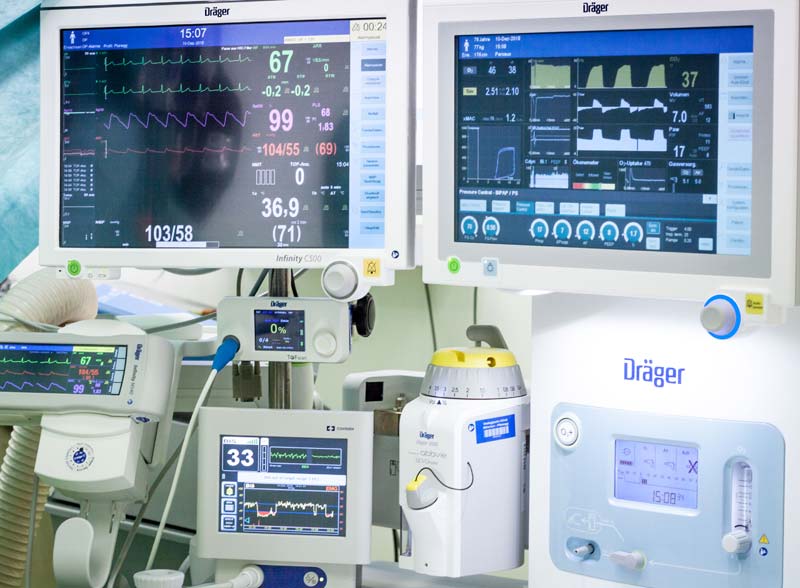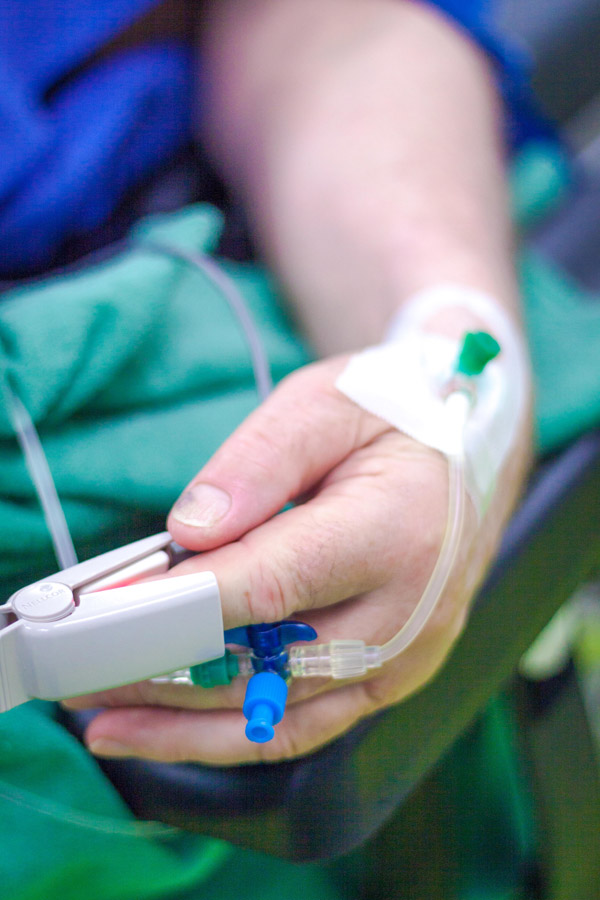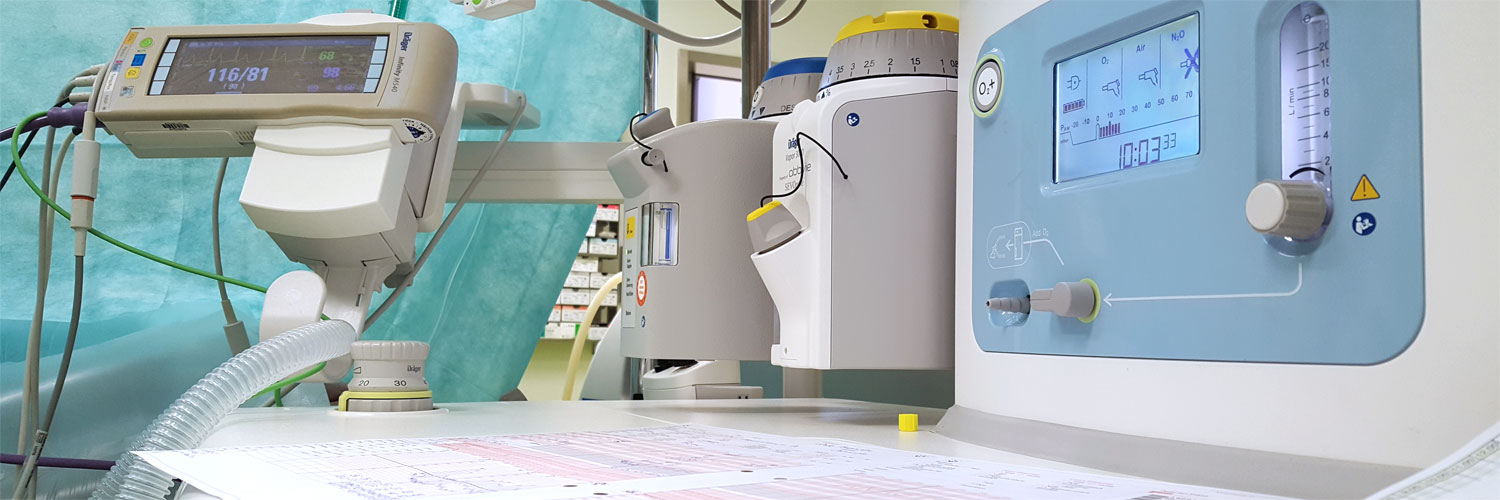General anaesthetics

Preparation of the patient for an anaesthetic procedure commences as soon as he is brought into the operating theatre, with the constant monitoring of heart activity (by electrocardiogram). A small measuring device attached to the finger shows us how much oxygen your blood contains. We then lay an infusion or intravenous drip into a vein in your hand or arm.
A general anaesthetic places you in a sleep-like state, in which you are fully unconscious and your entire body is insensitive to pain. A combination of medications is used to achieve this state. Before the anaesthetic is introduced, a mask is placed over the face, through which oxygen is fed to increase the body’s internal oxygen reserves. You are then administered an individually configured combination of sleeping medication, painkillers and, if required, a muscle relaxant. These medications are either injected into a vein or mixed with the inhaled air. After about a minute, you fall asleep and your breathing is supported through a face mask.
Depending on the type of surgical intervention, a breathing aid (endotracheal tube) may be inserted either into the trachea (intubation) or throat (larynx mask) to secure your breathing and to apply artificial respiration.

In the case of extended surgery or where there is increased risk due to a pre-existing condition, we conduct additional, more intensive monitoring procedures. These include placing a central venous catheter line, measuring arterial blood pressure, or inserting a stomach tube or an indwelling catheter into the bladder. We will inform you of the advantages and risks of these additional measures in a clarifying consultation.
The risks associated with a general anaesthetic are as follows:
Occasionally, the patient may experience physical sensitivities, although generally disappear rapidly. The most common such disturbances are nausea and vomiting, cold-like complaints in the throat, as well as vascular irritations, discomfort, inflammations, or bruising in the vicinity of the insertion sites of cannulas and catheters.
Major incidents in the context of anaesthetics are nowadays extremely rare, despite the large numbers of emergency operations and critically ill patients. This is also in part thanks to the continuous attention given by our anaesthetists and the close-knit monitoring activities enabled by our modern technical facilities.
These risks include damage to teeth or dentures and injury of the larynx, accompanied by hoarseness and difficulties in swallowing. In individual cases, serious heart, circulatory or respiratory problems may occur, for example triggered by intolerance reactions. It is also possible that allergic reactions to certain medications may occur, as well as positional injury, paralysis and numbness sensations on arms or legs brought about by pressure on the nerves.
Our top priority is always to ensure the best possible safety for you the patient. Our goal is to detect and avoid risks at any early stage.







